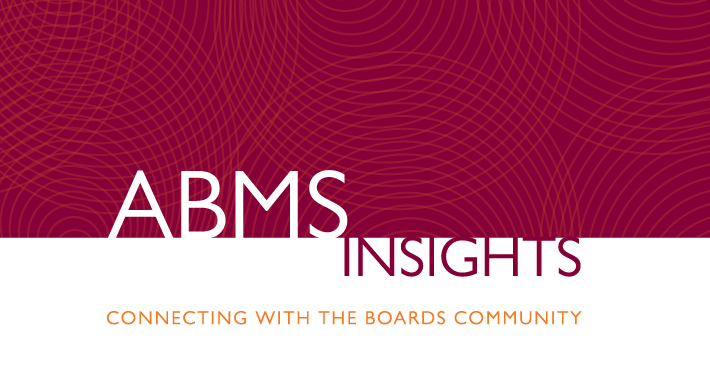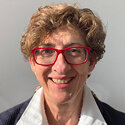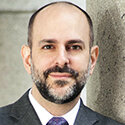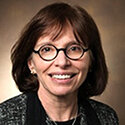
Adopting consistent standards of professionalism across organizations that train and certify physicians, using system-level educational outcomes to address system problems, and incorporating professionalism attributes into medical education are all ways to prepare and educate physicians about professionalism, according to speakers at ABMS Conference 2020 – Virtual held this past September.

Professionalism embodies the expected behaviors and attributes to which physicians aspire while serving their patients and society, noted Betsy White Williams, PhD, MPH, Clinical Program Director of the Professional Renewal Center®, and Clinical Associate Professor, Department of Psychiatry in the School of Medicine at the University of Kansas. There is general acceptance of the importance of professionalism in medicine, but it remains a challenging concept to define, teach, and evaluate because of its complex nature.
Dr. Williams studied five types of social organizations that have an interest in ensuring professionalism in physicians and trainees to determine how they operationalize professionalism. To that end, she reviewed medical education organizations’ professionalism assessment scales, medical professional organizations’ policy documents describing admission characteristics, hospitals’ and health care organizations’ medical staff by-laws and employee codes of conduct for medical staff appointment, legislative bodies’ state medical practice acts, and case law findings and decisions.
She found that these organizations had overlapping, but not identical, professional attributes. Specific attribute examples for professional identity were effectively communicates, shows empathy, and engages in health promotion. The attribute examples for patient care and management were employs evidence-based medicine where available, respects patients, and stays on time. The attribute examples for medical process functioning were being accessible to colleagues, being transparent, and has medical knowledge.
However, the organizations differed significantly in the level of importance they gave to each of the attribute types. While medical educators emphasized professional identity and patient care, hospitals emphasized the process issues, paying much less attention to the other issues. Professional organizations and case law focused on care and process, while legislation was balanced on these issues.
Next, Dr. Williams determined that these organizations significantly differed in how they conceptualized professionalism, that is, either as an identity (universal) or a series of rules to be followed (specific). Medical educators emphasized global types of behaviors. Professional organizations also focused on global behaviors, but less profoundly. In contrast, legislation focused on specific behaviors. Hospitals and clinics placed less emphasis on both, with slightly more focus on global actions.
These findings indicate that medical education organizations and specialty boards tend to conceptualize professionalism in global attributes, she said. However, organizations that, at various times, may need to adjudicate whether a provider is professional tend to enumerate specific behaviors. The latter approach is likely helpful in determining whether there is a cause for action to be taken against the physician, Dr. Williams noted.
Given the clear divergence of professionalism as it is discussed among educators, administrators, and litigators, Dr. Williams suggested that it may serve specialty boards to discuss these varying standards of professionalism, in addition to the overarching concepts, in order to prepare medical students for the more quotidian duties and dilemmas they will be expected to navigate.

Although professionalism is the responsibility of both individuals and systems, it is best addressed at the system level, said Brian C. George, MD, MAEd, Assistant Professor of Surgery at Michigan Medicine. “Fully honoring our profession’s social contract will require a coordinated approach to identify, measure, and improve system-level educational outcomes,” which he defined as “outcomes that can be attributed to one or more systems that produce and support physicians.” These tend to fall into three categories: patient outcomes, workforce patterns, and cost. An example of educational outcomes data are ranking training programs by complication rates of their graduates’ patients.
Measuring system-level outcomes can be even more difficult than identifying them, said Dr. George, who is also the Director of the UM Center for Surgical Training and Research and Senior Scholar at the Center for Professionalism and Value in Health Care. That’s because relationships between causes and effects may cross organizational boundaries, the place of measurement may not be the place for accountability and improvement, proxy measures are important, and large amounts of data are required when effects are small or distant, he said. Often, the latter makes it necessary to combine multiple data sources from different stakeholders. As an example, when evaluating patient outcomes of early-career surgeons for a recent study, Dr. George had to pull data from Medicare, carrier/professional claim files, certifying boards, the American Medical Association, and others. “Much of this data is very protected, very expensive, or both,” he said. “Aggregating it into one place is very time consuming and requires infrastructure.”
Dr. George cited the American Board of Family Medicine’s (ABFM’s) PRIME Registry as an example of a coordinated approach for measuring data. The PRIME Registry integrates claims, community, and certification data for physicians who are board certified by ABFM; offers a reporting and research infrastructure; is governed by ABFM with multi-stakeholder input; and supports both local practice and system-level improvement.
Using these data requires a coordinated response to fix problems that are uncovered by the measurement, Dr. George said. “System problems require system approaches that are iterative, data driven, and collaborative,” he added.
Dr. George is spearheading a pilot project to address system problems called the Procedural Learning and Safety Collaborative (PLSC), of which he is Executive Director. It involves 106 training programs, all of which use a standardized operative performance measurement system and collectively support ongoing educational research and quality improvement efforts. To date, PLSC is responsible for training more than 5,000 faculty and residents, collecting 200,000-plus evaluations, and publishing more than 30 papers. PLSC’s primary focus has been on measuring educational outcomes to examine the scope of racism and sexism in the operating room, developing perioperative approaches to improve operative teaching, and constructing predictive models to identify trainees who may need additional training. This type of work is in its infancy, said Dr. George, who welcomed additional partners.
Moving beyond evaluating individual competency to a coordinated approach targeting system-level educational outcomes will enable the profession to more fully embody the highest ideals of professionalism, he concluded.

Bonnie Miller, MD, Senior Director for Academic Communications for the Kern National Network for Caring and Character in Medicine (KNN), discussed KNN’s efforts to incorporate qualities associated with professionalism in medical education.
Established in 2017, KNN is a national network of seven medical schools dedicated to advancing caring and character in medicine with the goal of promoting human flourishing. “We propose that caring and character are the essence of professionalism,” said Dr. Miller, who also serves as Vice President for Educational Affairs at Vanderbilt University Medical Center.
KNN’s three-fold goal is to:
- Transform medical education by adopting and disseminating models of character and caring that guide teaching, learning, and assessing.
- Influence health care and health outcomes by advancing caring and character in working/learning environments.
- Engage broader society in order to advance human flourishing, which she defined as “complete physical and mental health and social well-being.”
For the purpose of medical education and practice, KNN defines character as “the complex constellation of psychological characteristics that motivates and enables individuals to act as moral agents.” Character is developmentally dependent and contextually formed over time; manifests in dispositions and practices; and includes attributes such as fairness, honesty, kindness, leadership, trust, integrity, and teamwork. The goal is practical wisdom and trust. “The attributes of character are similar to attributes of professionalism,” Dr. Miller said.
KNN defines care as “embraces a blend of practices, dispositions, and motivations all aimed at ensuring that individuals and populations grow, develop, and flourish as best they can.” Care is situated in the context of relationships and may entail power imbalances, but are imbued with a sense of humility, she explained. Trust is a precondition of care, but it is also generated in a reinforcing loop. It is what dedicated care practitioners continually aspire to improve, Dr. Miller added.
Caring as an activity is not a transactional commodity, but a deliberate practice, she said. Competence, which is a moral component of professionalism, is essential for caregiving. Individuals must be cognizant of their caring and character, but so too must systems. These attributes require a socio-ecological understanding that move from the individual level through the interpersonal, organizational, and community levels and all the way up to public policy, which can be used to drive national impact, Dr. Miller concluded.
© 2020, American Board of Medical Specialties® (ABMS®)
